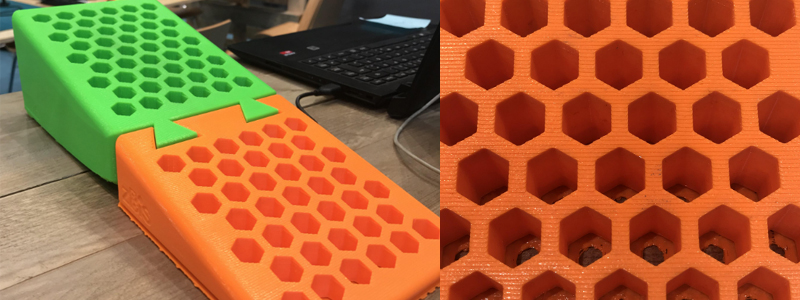Innovative technology is important for many reasons, but we particularly like how it can be applied to help those with disabilities. More awareness of disability and access concerns means more creative brains dedicated to solving some every day and vital access problems. We saw this first hand at this year’s Rehecare Trade Show in Dusseldorf.
3D printed wheelchair ramps
The full potential of 3D printing is still yet to be discovered, but it has started to finally take on disability access. Since an
early prototype by disability activist Raul Krauthausen, many people are now dedicating their time to 3D printed ramps in a bid to expand and improve on the design. Many of these ramp designs are in their infancy and currently still take a long time to print, but the future potential of 3D wheelchair ramps is making progress.

What does this mean for wheelchair users?
Using 3D printing means experimenting and improving the design of wheelchair ramps, adjusting them to be more accessible and easier to use. Small wheelchair chocks, in particular, offer additional freedom to wheelchair users, allowing them to create their own access points over steps and kerbs that would otherwise hinder or potentially completely block their access. The lightweight qualities of 3D printing make these ramps a perfect temporary solution that can be transported easily.
The future of accessibility
The disability community is always in need of new and innovative technology to help ease their everyday lives and 3D printed wheelchair ramps are just the start. With more technology for inspiration and increased awareness, other creative inventions like this
3D printed wheelchair cup holder could become commonplace for those struggling with a disability.
You can help shape the future of accessibility by dedicating a small amount of your time to solving everyday access problems. This could be as simple as taking part in Google’s effort to make all journeys easier by providing more
disability information on Google Maps. Alternatively, why not get creative and think about other common accessibility problems and how they could be more simply solved, or maybe there is a current access innovation that could be improved further.



